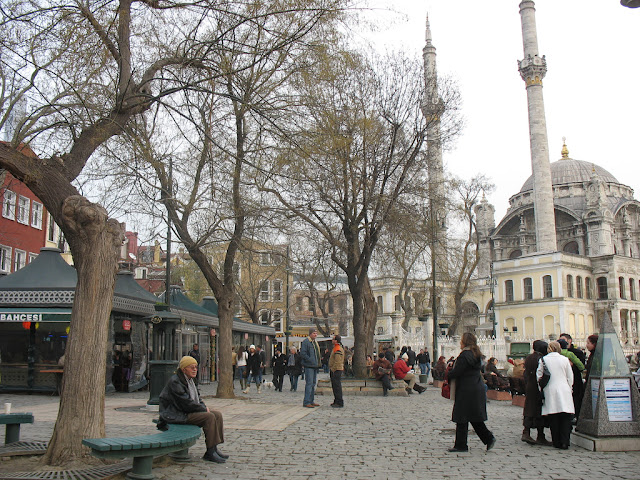Cicek Pasaji (literally Flower Passage in Turkish), originally called the Cité de Péra, is a famous historic passage on İstiklal Avenue in the Beyoğlu district of Istanbul, Turkey.
Opened in 1876, Cicek Pasaji is a covered arcade with rows of historic cafes, winehouses and restaurants.
 The site of CicekPasaji was originally occupied by the Naum Theatre, which was severely damaged by the Fire of Pera in 1870. After the fire of 1870, the theatre was purchased by the local Greek banker HristakiZografosEfendi, and architect KleanthisZannos designed the current building, which was called Cité de Péra or Hristaki Pasajı in its early years. In 1908 the Ottoman Grand Vizier SaitPaşa purchased the building, and it became known as the SaitPasa Passage.
The site of CicekPasaji was originally occupied by the Naum Theatre, which was severely damaged by the Fire of Pera in 1870. After the fire of 1870, the theatre was purchased by the local Greek banker HristakiZografosEfendi, and architect KleanthisZannos designed the current building, which was called Cité de Péra or Hristaki Pasajı in its early years. In 1908 the Ottoman Grand Vizier SaitPaşa purchased the building, and it became known as the SaitPasa Passage. Following the Russian Revolution of 1917, many impoverished noble Russian women, including a Baroness, sold flowers here By the 1940s the building was mostly occupied by flower shops, hence the present Turkish name Cicek Pasaji.
After the restoration of the building in 1988, it was reopened as a galleria of pubs and restaurants.
The most recent restoration was made in December 2005.
When you travel to Turkey, you must visit Cicek Pasaji and breathe the history. Enjoy your meal and drinks and have a warm conversation with your friends.
















































